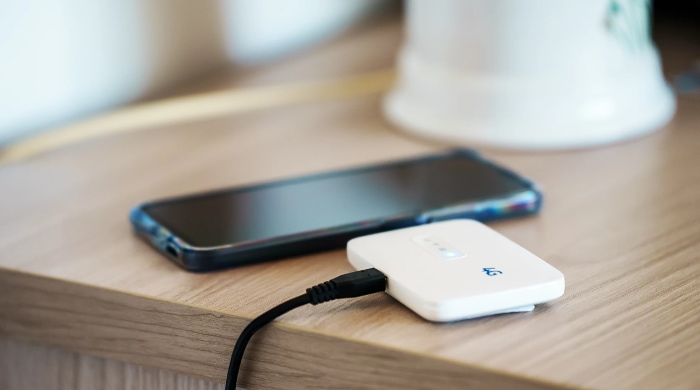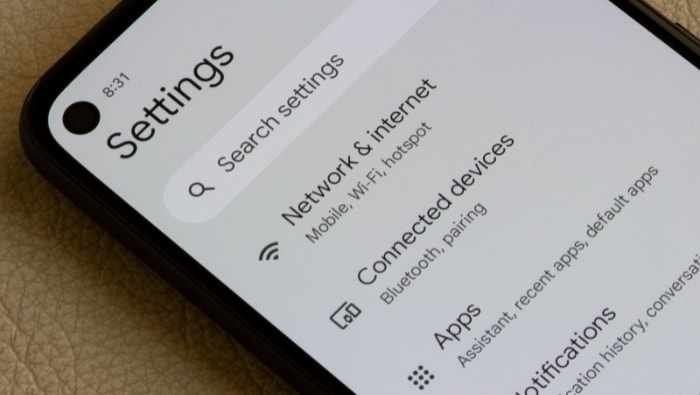How Much Data Does a Hotspot Use? Practical Tips Revealed

Mobile hotspots have become a lifeline in our digital world, especially when traditional Wi-Fi is out of reach. Picture this: You're in a cafe, or maybe traveling, and need an urgent internet connection for your laptop or tablet.
That's where your smartphone's hotspot feature jumps in as a hero, transforming your phone into a portable Wi-Fi source. But, there's a catch! Hotspots use your mobile data, and if you're not careful, you might end up using more than you bargained for.
From streaming your favorite shows to scrolling through social media, we'll explore how much data these activities consume when tethered to a hotspot. Understanding this not only helps avoid the shock of a hefty phone bill but also ensures you stay connected when you need it most.
Factors Influencing Hotspot Data Usage
Mobile hotspots are incredibly useful, but they can quickly eat through your data allowance if you're not careful. Various factors influence how much data your hotspot uses.
Knowing what affects your hotspot's data consumption can help you manage your data more efficiently.
Types of Online Activities
The kind of online activities you engage in plays a significant role in determining data usage. Simple tasks like browsing websites or checking emails generally consume less data.
In contrast, data-heavy activities like streaming high-definition videos or playing online games use much more. It’s important to be aware of these differences, especially if you have a limited data plan.
Quality of Streaming Content
Streaming is a common use for hotspots, but not all streaming is equal in terms of data usage. Watching a video in 480p uses significantly less data than streaming in 1080p or 4K resolution.
Similarly, music streaming at standard quality uses less data compared to high-quality streams. Adjusting the quality of streaming content can be a key strategy in managing data usage effectively.
Number of Connected Devices
The more devices connected to a hotspot, the greater the data consumption. Each device, whether it’s a smartphone, tablet, or laptop, adds to the overall data usage.
This is especially crucial to remember when multiple people are sharing a single hotspot connection.
Background Data Usage
Many apps on your devices continue to use data in the background for updates and synchronizations, even when you're not actively using them. This background data usage can contribute significantly to your overall data consumption.
Keeping an eye on which apps are running in the background and restricting unnecessary data usage can help save precious data.
Software Updates and Downloads
Downloading large files or updating software while connected to a hotspot can use a substantial amount of data. These activities are best done on a Wi-Fi connection.
If it’s essential to download or update over a hotspot, being aware of the file size and data availability is important.
Data Consumption: Common Applications and Services
In the era of smartphones and constant online presence, various applications and services have become integral to our daily routines. However, these applications can vary widely in how much data they consume.
Understanding the data demands of these common applications can help you make more informed decisions about using them while connected to a hotspot.
Streaming Video Services
Services like Netflix, YouTube, and Hulu are massively popular for streaming video content. However, they are also among the biggest data consumers.
The amount of data used depends on the streaming quality. For example, streaming in standard definition (SD) uses less data than high-definition (HD) or 4K.
To give you an idea, streaming an HD movie might use around 3GB of data, whereas the same movie in SD might use about 1GB.
Social Media Platforms
Platforms like Facebook, Instagram, and TikTok have become ubiquitous in our social interactions. While they might not use as much data as video streaming services, they can still consume a significant amount, especially with features like auto-playing videos and high-resolution images.
Regular browsing and posting on these platforms can add up over time, especially if you spend several hours on them daily.
Online Gaming
Online gaming is not just about playing a game; it often involves downloading updates and live streaming, which can use substantial data. Multiplayer games, which require constant communication with servers and other players, also tend to consume more data.
The exact amount depends on the specific game and playtime.
Video Conferencing Apps
With the rise of remote work and virtual meetings, apps like Zoom, Skype, and Microsoft Teams have become more prevalent. These applications can use a considerable amount of data, especially for video calls.
An hour of video conferencing can use anywhere from 500MB to 1.5GB of data, depending on the video quality.
Cloud-Based Services
Services like Google Drive, Dropbox, and iCloud are commonly used for storing and sharing files. Uploading and downloading large files or frequently syncing data across these services can consume significant amounts of data.
Being mindful of the file sizes and the frequency of sync can help manage data usage.
Estimating Your Data Needs

Accurately estimating how much data you need for your hotspot can be challenging but is essential for avoiding overage charges or running out of data at crucial moments. By evaluating your typical online activities and understanding the data demands of different services, you can better gauge your monthly data requirements.
Assessing Your Regular Online Activities
Start by reflecting on your regular internet habits. Are you frequently streaming videos, or do you mostly browse websites and check emails? List down the activities you commonly engage in and how often you do them.
This self-assessment forms the basis for estimating your overall data usage.
Understanding Data Usage by Activity
Different online activities consume data at different rates. For instance, an hour of web browsing might use far less data than an hour of streaming HD video.
Familiarizing yourself with the average data usage of common activities (like streaming, gaming, or social media browsing) will help you calculate your total data needs more accurately.
Utilizing Data Calculators
Many mobile carriers and websites offer data calculators. These tools allow you to input your estimated usage for various activities, providing you with an overall data usage estimate.
Using a data calculator can simplify the process of estimating your monthly data needs.
Monitoring Current Usage
If you're already using a hotspot, monitor your current data usage. This real-world data can be extremely helpful in understanding your consumption patterns.
Most smartphones and hotspot devices have built-in tools to track data usage, which can guide you in adjusting your plan or usage habits accordingly.
Factoring in Occasional High Data Usage
Remember to consider special occasions or periods where your data usage might spike, such as during travel or when guests are using your hotspot. These instances can significantly impact your data needs, and it's wise to factor in some extra data for such situations.
Tips for Managing Hotspot Data Usage
Managing hotspot data usage effectively is key to staying connected without facing surprise bills or data shortages. With the right strategies, you can maximize your data plan and enjoy uninterrupted online access.
Here are some practical tips to help you keep your hotspot data usage in check.
Set Data Limits and Alerts
Most smartphones and hotspot devices allow you to set data limits and alerts. This feature notifies you when you're approaching your data cap, helping you avoid overages.
Adjust these settings to align with your monthly data plan and monitor your usage closely.
Adjust Streaming Quality
Lower the streaming quality for videos and music when using a hotspot. Opt for standard definition (SD) rather than high definition (HD) or 4K video streaming, and choose lower bitrate options for music.
This simple adjustment can significantly reduce data consumption.
Disable Background Data
Apps running in the background can silently consume data. Go into your device settings and restrict background data for apps that don't need to be constantly updated.
This can make a noticeable difference in conserving your data.
Use Data-Saving Modes
Many apps and browsers offer data-saving modes. These modes optimize app performance to minimize data usage, often by reducing image quality or disabling automatic video playback.
Enable these features when browsing or using apps on your hotspot connection.
Connect to Wi-Fi Whenever Possible
To save your hotspot data, connect to Wi-Fi networks whenever they're available and secure. Regularly using Wi-Fi for data-intensive tasks like software updates or large downloads can keep your hotspot data usage minimal.
Regularly Monitor Your Data Usage
Keep an eye on your data usage throughout the month. Regular monitoring can help you identify which activities are using the most data and adjust your habits accordingly.
Most devices provide detailed insights into which apps or services are consuming the most data.
Conclusion
Mobile hotspots are a fantastic tool for staying connected on the go, but they come with the challenge of managing data usage effectively. From understanding the impact of various online activities on data consumption to estimating data needs, it’s clear that being data-savvy is essential.
We've looked at practical tips like setting data limits and adjusting streaming quality, all aimed at helping you make the most of your data plan. Staying informed and proactive about your data usage ensures that your hotspot remains a convenient and cost-effective way to access the internet, wherever you are.
So, next time you fire up your mobile hotspot, remember these insights and strategies to stay connected without any data worries.


